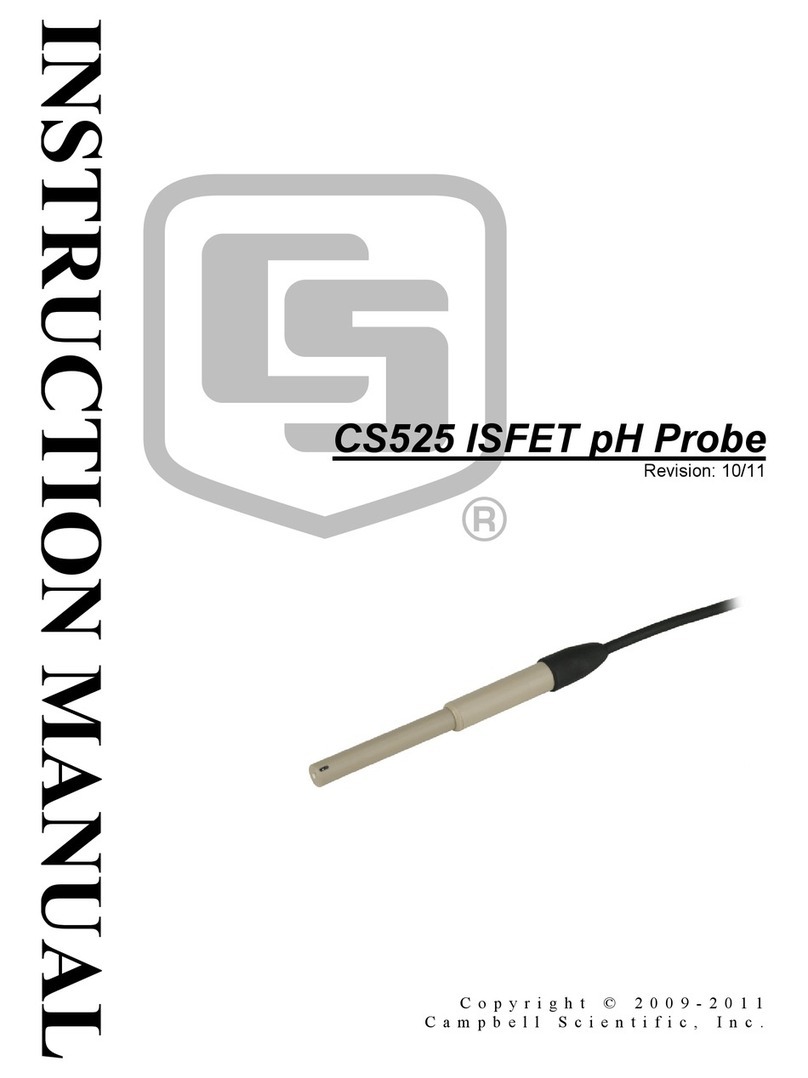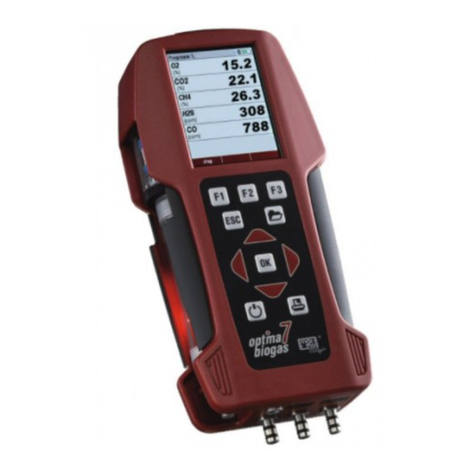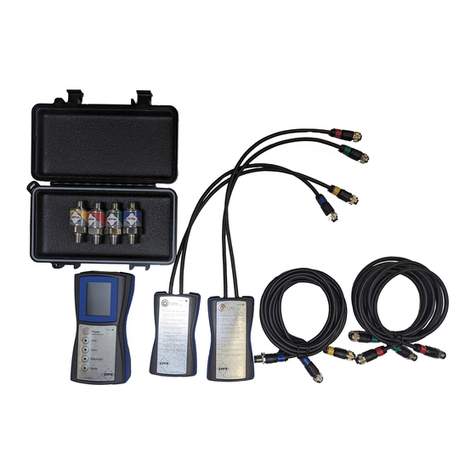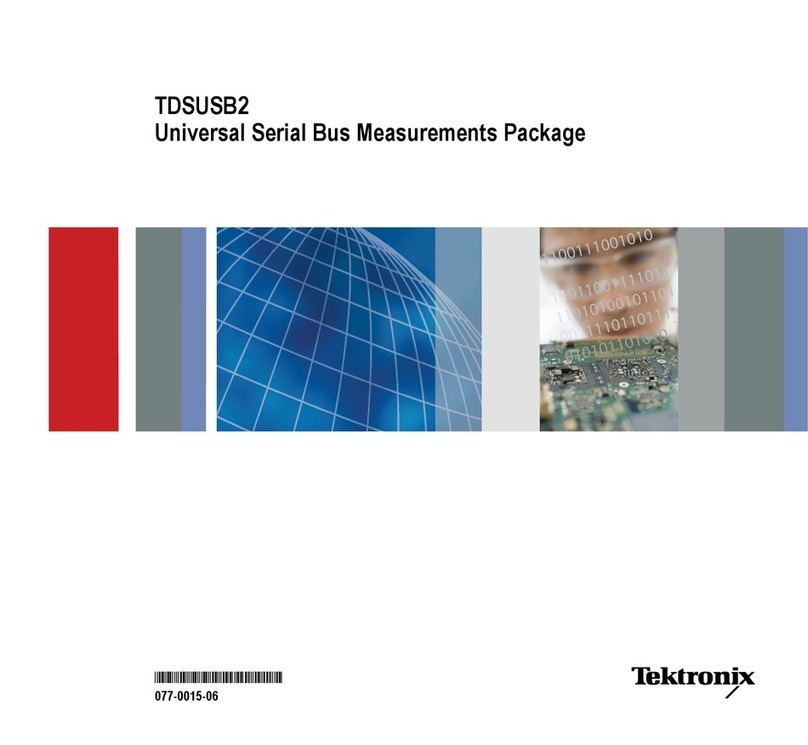RoboSense LiDAR RS-Bpearl User manual

RS-Bpearl User manual

RS-Bpearl User manual
II
Revision History
Issue
Modifications
Release Date
Edited by
1.0
Original issue
2019-8-14
PD
2.0
Updated product appearance image
Updated product mechanical dimensions
Updated sensor power consumption
Updated use instructions of RSView in Apendix C
Updated Appendix A
Added footnotes to product specifications
Updated the information in the table of Laser Channels
and Vertical Angles
2019-12-11
PD
2.0.1
Updated product mechanical dimensions drawing in
Appendix E
Corrected some minor description errors
Changed product name to RS-Bpearl
2020-2-18
PD
3.0.0
Added network timing function
Added function to the LiDAR WEB Interface
Added description of shifting LiDAR configuration
interface to the WEB Interface
Updated Appendix A
Updated the DIFOP protocol
Updated sensor driver description
Added anticlockwise rotation function to the LiDAR
motor rotation direction.
2021-12-17
PD

RS-Bpearl User manual
III
Terminologies
MSOP
Main data Stream Output Protocol
DIFOP
Device Info Output Protocol
FOV
Field Of View
PTP
Precision Time Protocol
GPS
Global Positioning System
UTC
Universal Time Coordinated
Protocol
Protocol version number, 00 represents old version, 01
represents the latest version
Wave_mode
Echo flag
Temp
LiDAR temperature information
Resv
Reserved data flag
UCWP
User Configuration Write Protocol
Azimuth
LiDAR horizontal rotation angle
Timestamp
Time stamp which is used to record system time
Header
Frame header in protocol packet
Tail
Frame tail in protocol packet

RS-Bpearl User manual
IV
Contents
1. Safety Notices.................................................................................................................................7
2. Product Appearance and Interface.............................................................................................. 8
2.1. Product Appearance...........................................................................................................8
2.2. Aviation Plug and Pin Definition.......................................................................................8
2.3. Interface Box....................................................................................................................... 9
3. Unboxing & Installation.............................................................................................................. 11
3.1. Standard Package............................................................................................................. 11
3.2. Sensor Mounting.............................................................................................................. 11
3.3. Quick Connection............................................................................................................. 12
4. Sensor Specifications and Features........................................................................................... 14
4.1. Sensor Specification.........................................................................................................14
4.2. Point Cloud Display.......................................................................................................... 15
4.2.1. Coordinate Mapping............................................................................................. 15
4.3. Reflectivity........................................................................................................................ 16
4.4. Laser Return Modes......................................................................................................... 17
4.4.1. Principle of Laser Return Modes......................................................................... 17
4.4.2. Return Mode Flag..................................................................................................17
4.5. Phase Locking................................................................................................................... 18
4.6. Time Synchronization......................................................................................................18
4.6.1. GPS Time Synchronization................................................................................... 19
4.6.2. The Use of GPS for Time Synchronization.......................................................... 19
4.6.3. PTP Time Synchronization...................................................................................20
4.6.4. PTP Wiring Diagram (Valid for RS-Bpearl 3.0).................................................. 20
4.6.5. Time Calculation....................................................................................................21
5. Communication Protocols.......................................................................................................... 23
5.1. MSOP and DIFOP.............................................................................................................. 23
5.2. Main Data Stream Output Protocol(MSOP).............................................................. 25
5.2.1. Header....................................................................................................................25
5.2.2. Data Blocks............................................................................................................ 27
5.2.3. Tail.......................................................................................................................... 29
5.3. Device Info Output Protocol(DIFOP).........................................................................29
5.4. User Configuration Write Protocol (UCWP)................................................................33
6. Vertical Angles and Exact Point Time Calculation....................................................................36
6.1. Channel Number and Vertical Angles.............................................................................36
6.2. Exact Point Time Calculation.......................................................................................... 36
6.2.1. Exact Point Time Calculation in Single Return Mode........................................ 36
6.2.2 Exact Point Time Calculation in Dual Return Mode................................................ 38
7. Trouble Shooting......................................................................................................................... 40
Appendix A Web Interface................................................................................................................ 42
A.1 Device Information Screen................................................................................................. 42
A.2 Device Parameter Setting Screen....................................................................................... 43
A.3 Device Diagnostics/Operation Status Screen.....................................................................44
A.4 Device/System Update Screen........................................................................................... 45

RS-Bpearl User manual
V
Appendix B Information Registers.................................................................................................... 48
B.1 Motor Speed (MOT_SPD)................................................................................................... 48
B.2 Ethernet(ETH)..................................................................................................................... 48
B.3 FOV Setting(FOV_SET)........................................................................................................ 49
B.4 TCP MSOP Port Number..................................................................................................... 49
B.5 Motor Phase Offset(MOT_PHASE)..................................................................................... 49
B.5 Top Board Firmware Version(TOP_FRM)............................................................................50
B.6 Bottom Board Firmware Version(BOT_FRM)..................................................................... 50
B.7 Software Version(SOF_FRM).............................................................................................. 51
B.8 Motor Firmware Version(MOT_FRM).................................................................................51
B.9 Time Synchronization(TIMESTAMP_VER)........................................................................51
B.10 UTC Time(UTC_TIME)....................................................................................................... 52
B.11 Operation Status(STATUS).................................................................................................54
B.11.1 Operation Status (valid for RS-Bpearl 2.0)............................................................ 54
B.11.2 Operation Status (valid for RS-Bpearl 3.0)............................................................ 55
B.12 Fault Diagnosis (FALT_DIGS)............................................................................................. 56
B.12.1 Fault Diagnosis(valid for RS-Bpearl 2.0)................................................................ 56
B.12.2 Fault Diagnosis(valid for RS-Bpearl 3.0)................................................................ 58
B.13 ASCII Code in GPRMC Packet............................................................................................60
B.14 Corrected Vertical Angle(COR_VERT_ANG)......................................................................60
B.15 Corrected Horizontal Angle(COR_HOR_ANG)............................................................... 62
Appendix C RSView........................................................................................................................... 64
C.1 Software Features...............................................................................................................64
C.2 Install RSView......................................................................................................................64
C.3 Set Up Network...................................................................................................................64
C.4 Visualize Streaming Sensor Data........................................................................................ 65
C.5 Capture Streaming Sensor Data to PCAP File.....................................................................66
C.6 Replay Captured Sensor Data from PCAP File.................................................................... 67
C.7 Configure LiDAR Parameters with RSView......................................................................... 70
C.8 Online Firmware Update with RSView............................................................................... 72
C.10 Fault Diagnosis with RSView.............................................................................................73
Appendix D RS-Bpearl ROS&ROS2 Package......................................................................................75
D.1 Install Software...................................................................................................................75
D.2 Download & Compile RoboSense LiDAR Driver Package................................................... 75
D.3 Configure PC IP................................................................................................................... 76
D.4 Real Time Display................................................................................................................76
D.5 View Offline Data................................................................................................................77
Appendix E Mechanical Drawings.....................................................................................................79
Appendix F Sensor Mounting........................................................................................................... 80
Appendix G Obtain MSOP and DIFOP Port Number from Data Packets.......................................... 81
Appemdix H Sensor Cleaning............................................................................................................82
H.1 Attention.............................................................................................................................82
H.2 Required Materials............................................................................................................. 82
H.3 Cleaning Method................................................................................................................ 82

RS-Bpearl User manual
VI
1. Manufacturer Information
Suteng Innovation Technology Co., Ltd. (RoboSense)
Buliding 9, Block 2, Zhongguan Honghualing Industry Southern District, 1213 Liuxian Avenue,
Taoyuan Street, Nanshan District, Shenzhen, China
Landline: 0755-86325830
Mobile Phone: +86 13651448823(Marketing & Sales)
Email: service@robosense.cn
Working hours from Monday to Friday 09:00-18:00(GMT/UTC +8)
2. Disclaimer of Liability
This manual is protected by copyright. Any rights arising from this copyright are owned by
RoboSense. Reproduction of this manual or part of the manual is only permitted within the legal
scope of the copyright law. Without obtaining any authorization, this document shall not be
abridged or translated. The trademarks mentioned in this document are the property of their
respective owners. RoboSense reserves all rights.
3. Certifications
特别说明:
This manual is updated from time to time without prior notice, to get the latest version, please
visit RoboSense company website to download or contact the RoboSense Technical Support or
Sales.

RS-Bpearl User manual
7
1. Safety Notices
To avoid risks of accidents, damage to sensor or violating of your product warranty, please read
and follow the instructions in this manual carefully before operating the product.
Laser Safety
This product meets the following standards for laser products:
IEC 60825-1:2014;
Sensor Overheating Sign
Please pay attention to the overheating sign on the LiDAR surface to avoid a hot LiDAR surface
that may lead to sensor failure or undesirable consequences.
Read Instructions – Please reading all instructions on sensor operation and use
Retain Instructions – The safety and operating instructions should be retained for future
reference.
Heed Warnings - All warnings on the product and in the operating instructions should be
adhered to.
Servicing – Except for what’s described in this manual, the sensor has no field serviceable
parts. For servicing, please contact RoboSense sales or the authorized distributors.

RS-Bpearl User manual
8
2. Product Appearance and Interface
2.1. Product Appearance
Figure 2-1 LiDAR Coordinates and Rotation Direction
2.2. Aviation Plug and Pin Definition
The data output access of the RS-Bpearl is physically protected by an aviation plug. From the
LiDAR to the aviation plug the cable length is 1 meter. The pins of the aviation plug are defined as
follows:
Figure 2-2 RS-Bpearl Aviation Plug
Table 2-1 Definition of Pins of Aviation Plug of RS-Bpearl
Pin
Wire Color
Function
1
Red
+12V
2
Yellow
+12V
3
White
GROUND
4
Black
GROUND

RS-Bpearl User manual
9
5
Green
GPS PULSE
6
Blue
GPS REC
7
Brown
LiDAR Ethernet RX+
8
Brown white
LiDAR Ethernet RX-
9
Orange
LiDAR Ethernet TX+
10
Orange white
LiDAR Ethernet TX-
2.3. Interface Box
Your RS-Bpearl comes with an Interface Box, which has 2 LED lights and provides convenient
connections to power, RJ45 Ethernet, and GPS. (The length of the integrated cable attached to
the Interface Box of the aviation plug version LiDAR is 3 meters, for other cable lengths, please
contact RoboSense technical support).
Figure 2-3 Definition of Interface Box Ports
Specifications of Interface Box ports:
Table 2-2 Interface Box Port Specification
No.
Port
Specification
1
Power Input
Standard DC 5.5-2.1 connector
2
Network
Standard RJ45 Ethernet connector
3
GPS timing
SH1.0-6P Female connector
1.1.1 Power
The power supply interface of the RS-Bpearl on the Interface Box is a standard DC 5.5-2.1
1
2
3

RS-Bpearl User manual
10
connector.
There are 2 LEDs (power indicators) on the Interface Box: when the power input is normal, the
red LED is on, the green LED is always on by default. When the red LED is off, the Interface BOX
enters the protection state. If either LED (when connected to GPS) is off, please check whether
the power input is normal; If the power input is normal, the Interface BOX may be damaged.
Please contact your technical support or account manager at RoboSense.
1.1.2 RJ45 Ethernet Port
The network interface on the Interface Box follows the EIA/TIA568 standard.
1.1.3 GPS Time Synchronization
GPS REC receives GPS UART standard input; GPS PULSE receives GPS PPS input.
The definitions of pins of the GPS port are detailed in the figure below:
Table 2-3 GPS Port Definition
Pin No.
function
1
GPS_PULSE
2
+5V
3
GND
4
GPS_REC
5
GND
6
NC
Note: When the "ground" of RS-Bpearls is connected to an external system, the negative polarity ("ground") of
the external system and the "ground" of the GPS system must share a non-isolated common ground.

RS-Bpearl User manual
11
3. Unboxing & Installation
3.1. Standard Package
The table below lists the contents of a standard RS-Bpearl package from the factory.
Table 3-1 Standard Factory Package of the RS-Bpearl
No.
Contents
SPEC/QTY
1
LiDAR
RS-Bpearl*1
2
Interface Box
3M *1
3
Power Adapter
DC12Vx3.34A/40W *1
4
Power Cable
1.2M *1
5
Ethernet Cable
1.5M *1
6
Screw Pack
M4x15 *3;M4x20 *3
Note: There might be variants of the sensor and accessories that you are going to purchase or
interested in, please contact RoboSense Sales for details.
3.2. Sensor Mounting
The RS-Bpearl can be mounted to any application with a mounting base. As shown in the figure
below, the mounting base of the RS-Bpearl should be flat, uneven surfaces should be avoided.
The precise locator pins on the mounting base should strictly follow the dimensions of the locator
holes at the bottom of the LiDAR, and the height of the locator pin should not be higher than
4mm. We recommend using aluminum alloy for the mounting base material, which facilitates
heat dissipating of the LiDAR during operating.

RS-Bpearl User manual
12
Figure 3-1 LiDAR Mounting Details
The following situations should be avoided when mounting the LiDAR:
1) The reserved mounting space for the LiDAR is smaller than the volume of the LiDAR itself.
2) The integrated sensor cable is too tight.
3.3. Quick Connection
Users are allowed to configure the network settings of the RS-Bpearl, which is set at the factory
with default IP and port numbers, as shown in the table below:
Table 3-2 actory Default Network Configuration
IP Address
MSOP Port No.
DIFOP Port No.
RS-Bpearl
192.168.1.200
6699
7788
Computer
192.168.1.102
To establish communication between the LiDAR and computer, it’s required to set the computer's
IP address to the same network segment as the LiDAR, for example 192.168.1.x (the value of x
could be from 1 to 254), and the subnet mask to 255.255.255.0. If you don't know the network
configuration of the LiDAR, please connect the LiDAR to computer and use wireshark to capture
the LiDAR data packets to analyze.
The wiring diagram of the Interface Box connection is as shown in the figure below:
3xM4 Screws, 6-8 mm above mounting surface;
25kgf.cm recommended tightening torque
2xΦ3.97±0.03 locating pins, 3-4
mm above mounting surface

RS-Bpearl User manual
13
Figure 3-2 Interface Box Connection
To GPS
Interface Box
To power adapter
To PC Network

RS-Bpearl User manual
14
4. Sensor Specifications and Features
4.1. Sensor Specification1
Table 4-1 Sensor Specifications
Sensor
Laser Channels
32
FOV(Horizontal)
360°
Laser Wavelength
905nm
FOV(Vertical)
0°~90°
Laser Emission Angle
Horizontal(maximum): 9 mrad,
Angular Resolution (Horizontal)
0.1°/ 0.2°/ 0.4°
Laser Safety
Class 1 Eye-safe
Angular Resolution (Vertical)
2.81°
Measurement Range2
0.1m to 30m(10%NIST targets)
Ranging Accuracy (Typical)3
Up to ±3cm
Blind Distance
≤0.1m
Frame Rate
5Hz/10Hz/20Hz
Rotation Speed
300/600/1200rmp(5/10/20Hz)/
Output
Data Rate
5576,000pts/s (Single Return Mode); 1,152,000pts/s(Dual Return Mode)
Ethernet
100Mbps
Data Output Protocol
UDP packets over Ethernet
UDP Packets Content
Distance, Calibrated Reflectivity Measurements, Time Stamps
Mechanical
Operating Voltage
9V-32V
Dimension
φ100mm * H111 mm
Power Consumption4
13w(Typical)
Operating Temperature5
-20℃~+60℃5
Weight
0.92kg (LiDAR)
Storage Temperature
-40℃~+85℃
Time Synchronization
$GPRMC with 1 PPS & PTP
Sensor Protection
IP67
1The data above is only for serial production products, and may not be applicable to any samples, testing devices
and other non-production versions. If you have any questions, please contact RoboSense Sales.
2. The measurement range takes a 10% NIST diffuse reflector as the target, and the test results may be affected
by environment conditions, including but not limited to factors such as ambient temperature and light
3The ranging accuracy takes a 50% NIST diffuse reflector as the target. The test results may be affected by
environment conditions, including but not limited to factors such as ambient temperature and target distance.
The accuracy value is applicable to most channels, and there may exists differences between some channels.
4The power consumption of the device may be affected by environment conditions, including but not limited to
factors such as ambient temperature, target distance, target reflectivity, etc.
5The operating temperature of the device may be affected by environment conditions, including but not limited
to factors such as ambient light and airflow changes.

RS-Bpearl User manual
15
4.2. Point Cloud Display
4.2.1. Coordinate Mapping
Since the data packet output by the LiDAR only provides the horizontal rotation angle and
distance infomation, in order to present a 3D point cloud image, the angle and distance
information in polar coordinates need to be converted into x, y, z coordinates in the Cartesian
coordinate system, and the conversion formula is as follows:
Where is the measured distance,
is the vertical angle of the laser,
is the horizontal
rotation angle of the laser in the Polar Coordinate System, and x, y, z are the coordinate values in
the Cartesian Coordinate System.
and can be obtained from the DIFOP data packets, please refer to B.14 and B.15 in
Appendix B for details.
Figure 4-1 LiDAR Polar Coordinates
Note 1: ROS source code of RS-Helios has by default completed the coordinate conversion to conform to the
right-handed coordinate system of ROS. The X-axis of ROS is the positive Y direction in Figure 4-1, and the Y-axis
of ROS is the negative X direction in Figure 4-1.
Note 2: The origin of the LiDAR sensor coordinate is at the center of the LiDAR base.

RS-Bpearl User manual
16
4.3. Reflectivity
RS-Bpearl measures the reflectivity of objects. The reflectivity is an index that measures the
ability of an object to reflect light and is greatly related to the material of the object itself.
RS-Bpearl reports calibrated reflectivity values from 0 to 255, among which diffuse reflectors
report values from 0 to 100, and retroreflectors report values from 101 to 255. Black objects are
with low reflectivity values, white objects are with high reflectivity values, the most ideal
reflection reports the reflectivity value of 255.
Figure 4-2 Definition of Reflectivity
Diffuse Reflectors
Black, absorbent diffuse reflector
Reflectivity ≈0
White, reflective diffuse reflector
Reflectivity <100
Retro-Reflectors
Retro-reflector covered with semi-transparent
white surface
Reflectivity>100
Retro-reflector without any coverage
Reflectibity≈255

RS-Bpearl User manual
17
4.4. Laser Return Modes
4.4.1. Principle of Laser Return Modes
RS-Bpearl supports multiple laser return modes, namely: Strongest Return, Last Return and Dual
Return. When set to Dual Return mode, the details of the target will increase, and the volume of
data is twice that in the Single Return mode.
Due to beam divergence, multiple laser returns are possible from any single laser shot. A pulse
may diverge and becomes larger as it travels in the air, when a pulse is large enough to hit
multiple objects, it will produce multiple reflections. Usually, the farther away the object is, the
weaker the energy of the pulse arrived at the receiver. For bright or retroreflective surfaces, the
situation may be the opposite.
RS-Bpearl analyzes the received multiple returns, and reports the strongest return, last return or
dual returns at the same time, depending on the laser return mode settings. If the LiDAR is set to
the strongest return mode, only the value of strongest return will be reported. Similarly, if the
LiDAR is set to the last return mode, only the value of the last return will be reported. If the LiDAR
is set the dual return mode, both the strongest and last return value will be reported.
Note:
1. The sensor records both returns only when the distance between two objects is 1 meter or more.
2. When a laser pulse hits only one object, there is only the strongest return.
3. When a laser pulse hits two solid walls or other objects at two different distances, two returns will be produced.
In this case, there are two situations:
(1) When the strongest return is not the last return, the strongest and last return will be reported;
(2) When the strongest return is the last return, the strongest return and the second strongest
return will be reported.
4.4.2. Return Mode Flag
The RS-Bpearl is set in the Strongest Return mode at factory by default. If you need to change this
settings, please refer to Figure C14 in Appendix C RSView of this user manual for instructions. The
300th byte in a DIFOP packet is the flag of return mode, which corresponds to the following:
Table 4-2 Return Mode and the Corresponding Flag
Flag
Return Mode
00
Dual Return
01
Strongest Return
02
Last Return

RS-Bpearl User manual
18
4.5. Phase Locking
To minimize interference between multiple LiDARs, RS-Bpearl provides a phase-locking feature
that enables users to control where the lase firings overlap.
The phase locking feature, when a PPS pulse signal is triggered, askes the RS-Helios to rotate to a
specific angle to fire laser pulses. When multiple RS-Helios sensors are used at the same time, the
relative rotation angle between them is kept unchanged. The normal phase locking requires the
normal and stable PPS pulse triggering signal.
Figure 4-3 shows the RS-Bpearl set with different phases. The red arrows indicate the firing angle
of the sensor’s laser at the moment it receives the rising edge of the PPS signal. In the cases
below: 0 degrees, 135 degrees, and 270 degrees respectively.
Figure 4-3 RS-Bpearl Different Phase Settings
For the RS-Bpearl_2.0, users can use the RS-Bpearl RSView to check and modify the Phase
Locking settings: click Tools > RS-LiDAR Information for the "Phase Lock" parameter setting. The
phase locking value can be set from 0 to 359.
For the RS-Bpearl_3.0, users can use the RS-Bpearl Web Interface to check and modify the Phase
Locking settings: click Setting > Phase Lock Setting, for the "Phase Lock" parameter setting. The
phase locking value can be set from 0 to 359.
The Phase Lock feature will only be available when the rotation speed of the RS-Bpearl is set as
600RPM or 1200RPM.
4.6. Time Synchronization
The RS-Bpearl_2.0 only supports GPS+PPS time synchronization, while the RS-Bpearl_3.0
supports both GPS+PPS and PTP/gPTP time synchronization methods. Users can use the
RS-Bpearl Web Interface to set the time synchronization methods (Please refer to Appendix A.2
for instructions of setting at Web Interface.). Both the RS-Bpearl_2.0 and the RS-Bpearl_3.0 can
be connected to an external GPS module, and can synchronize the sensor system time with the
time provided by the GPS.

RS-Bpearl User manual
19
4.6.1. GPS Time Synchronization
Figure 4-4 GPS Time Synchronizatio Timing Diagram
The GPS module continuously sends GPRMC message and PPS synchronization pulse signals to
the sensor. The PPS synchronization pulse width is from 20ms to 200ms, and the GPRMC message
must be sent within 500ms after the rising edge of the PPS synchronization pulse.
4.6.2. The Use of GPS for Time Synchronization
The GPS_REC interface in the Interface Box of the RS-Bperl follows the RS232 level standard, as
shown in the table below:
Table 4-3 GPS Receive Pin Definition
Level
Receive Pin Definition
GPS REC
GPS PULSE
RS232
Receive the RS232 serial data
output by the GPS module
Receive the positive synchronization
pulse signal output by the GPS module,
the level is required to be 3.0V~15.0V
Note 1: The GPS_REC interface in the RS-Bpearl Interface Box is the SH1.0-6P female connector, and the pin
definition is as shown in Figure 2-3.
The external GPS module needs to set the serial output baud rate to 9600bps, 8 bits, no parity, 1
stop bit. RS-Bpearl only accepts the GPRMC sentence sent by the GPS module. The standard
structure of the GPRMC sentence is as follows:
$GPRMC,<1>,<2>,<3>,<4>,<5>,<6>,<7>,<8>,<9>,<10>,<11>,<12>*hh
<1> UTC Time
<2> Receiver status, A=active, V=void
<3> Latitude
<4> Latitudinal hemisphere N (northern hemisphere) or S (southern hemisphere)
<5> Longitude

RS-Bpearl User manual
20
<6> Longitudinal hemisphere E (east longitude) or W (west longitude)
<7> Speed over the ground(knots)
<8> Track made good (degrees True)
<9> UTC date
<10> Magnetic declination
<11> Magnetic declination direction, E (east) or W (west)
<12> Mode indicator (A=autonomous, D=differential, E=estimated, N=not valid)
*The last hh is the XOR sum of all characters from $ to *
Please note that:
1. The sending time interval of 1 PPS pulse needs to be controlled within 1s±100us;
2. The status bit in the GPRMC message must be A valid before time synchronization is allowed;
3. The length of GPRMC messages sent by existing GPS modules on the market is not consistent.
The length of GPRMC messages reserved in the DIFOP packet of RS-Bpearl is up to 86 bytes,
which is compatible with the GPRMC message format sent by most GPS modules on the market.
If an incompatibility occurs, please contact RoboSense technical support.
4.6.3. PTP Time Synchronization
PTP (Precision Time Protocol) is a time synchronization protocol, which itself is only used for
high-precision time synchronization between devices, but it can also be borrowed for frequency
synchronization between devices. Compared with various existing time synchronization
mechanisms, PTP has the following advantages:
1) Compared with NTP (Network Time Protocol, Network Time Protocol), PTP can meet
higher-precision time synchronization requirements. NTP can only achieve sub-second time
synchronization precision, while PTP can reach sub-microsecond time synchronization precision.
2) Compared with GPS (Global Positioning System), PTP requires lower construction and
maintenance costs.
4.6.4. PTP Wiring Diagram (Valid for RS-Bpearl 3.0)
To use the PTP synchronization method, the user need to make the following preparations,
connect devicesaccording to the connection method shown in the figure below:
1) Select PTP mode in the web interface (please refer to Appendix A.2 for Web Interface
configuration);
2) Prepare a PTP Master timing host (plug and play, no additional configuration required);
3) Ethernet switch;
4) Devices supporting PTP protocol
Table of contents
Popular Measuring Instrument manuals by other brands

PCB Piezotronics
PCB Piezotronics 393B32 Installation and operating manual
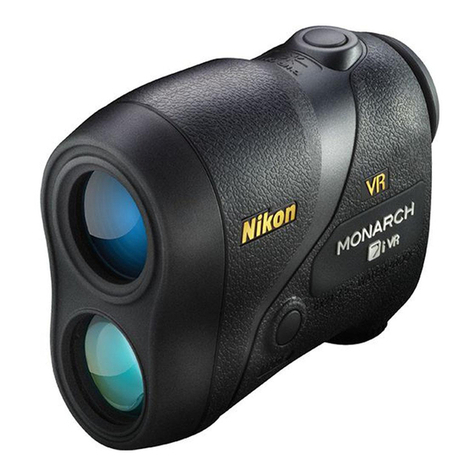
Nikon
Nikon Monarch 7iVR instruction manual
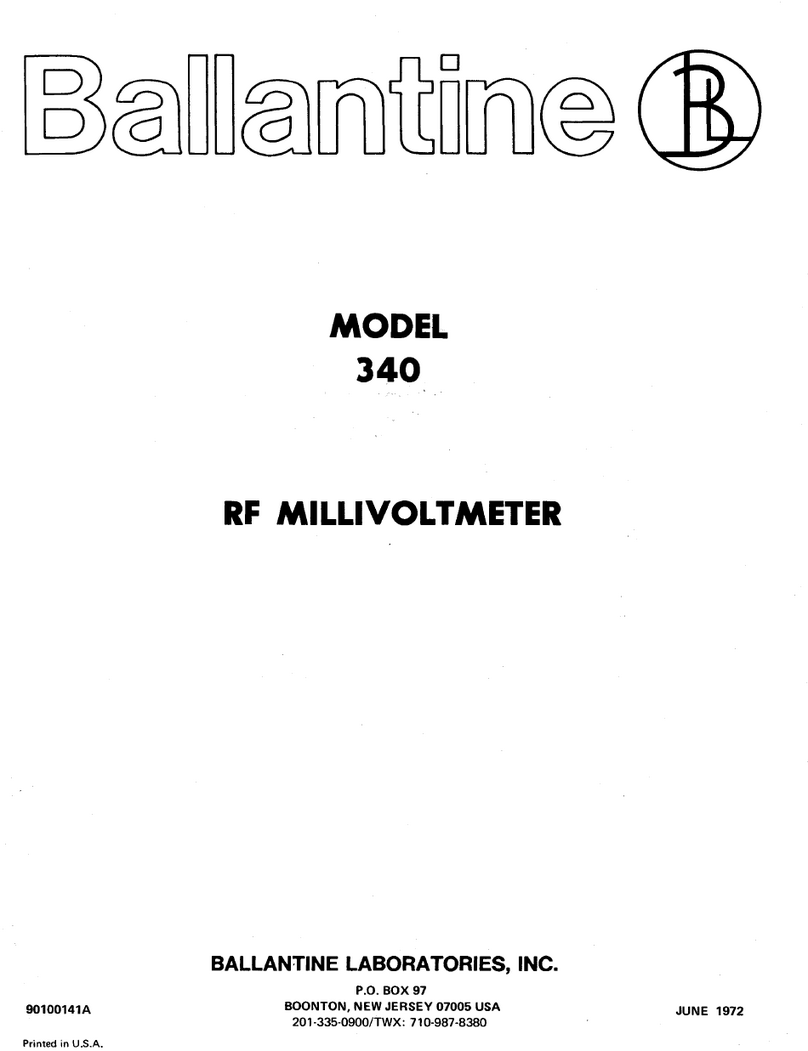
Ballantine
Ballantine 340 instruction manual
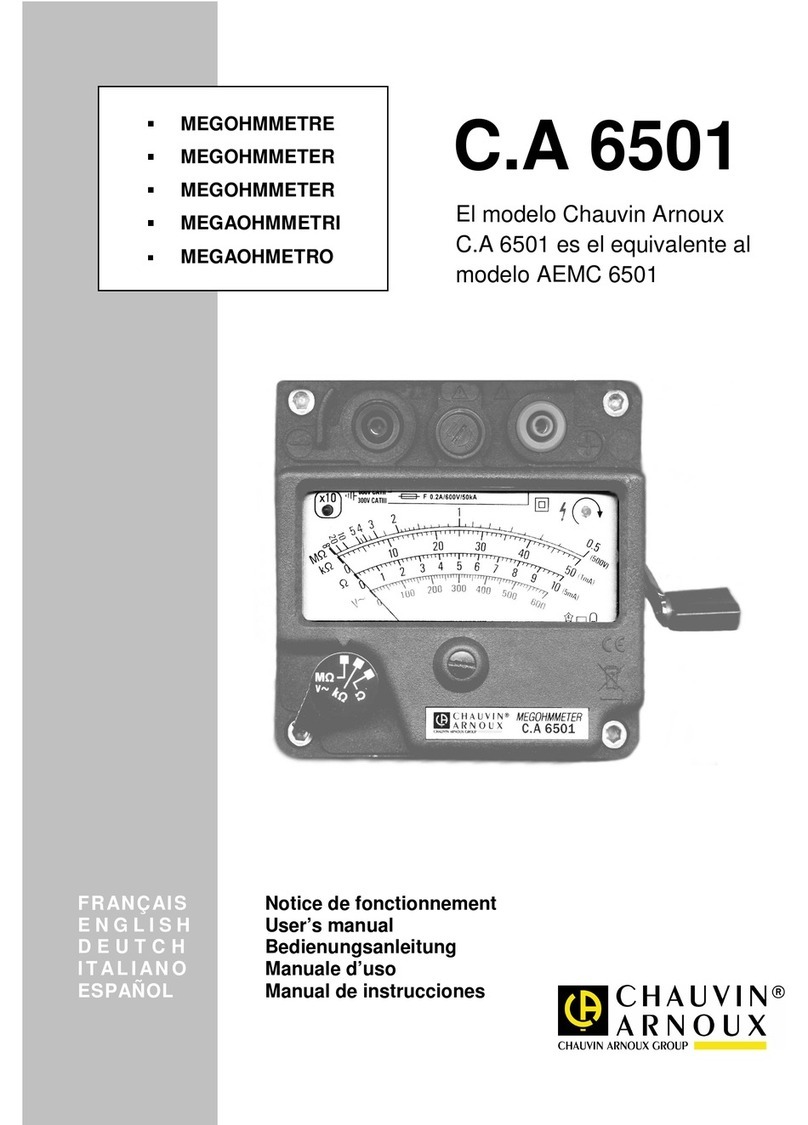
Chauvin Arnoux
Chauvin Arnoux C.A 6501 user manual
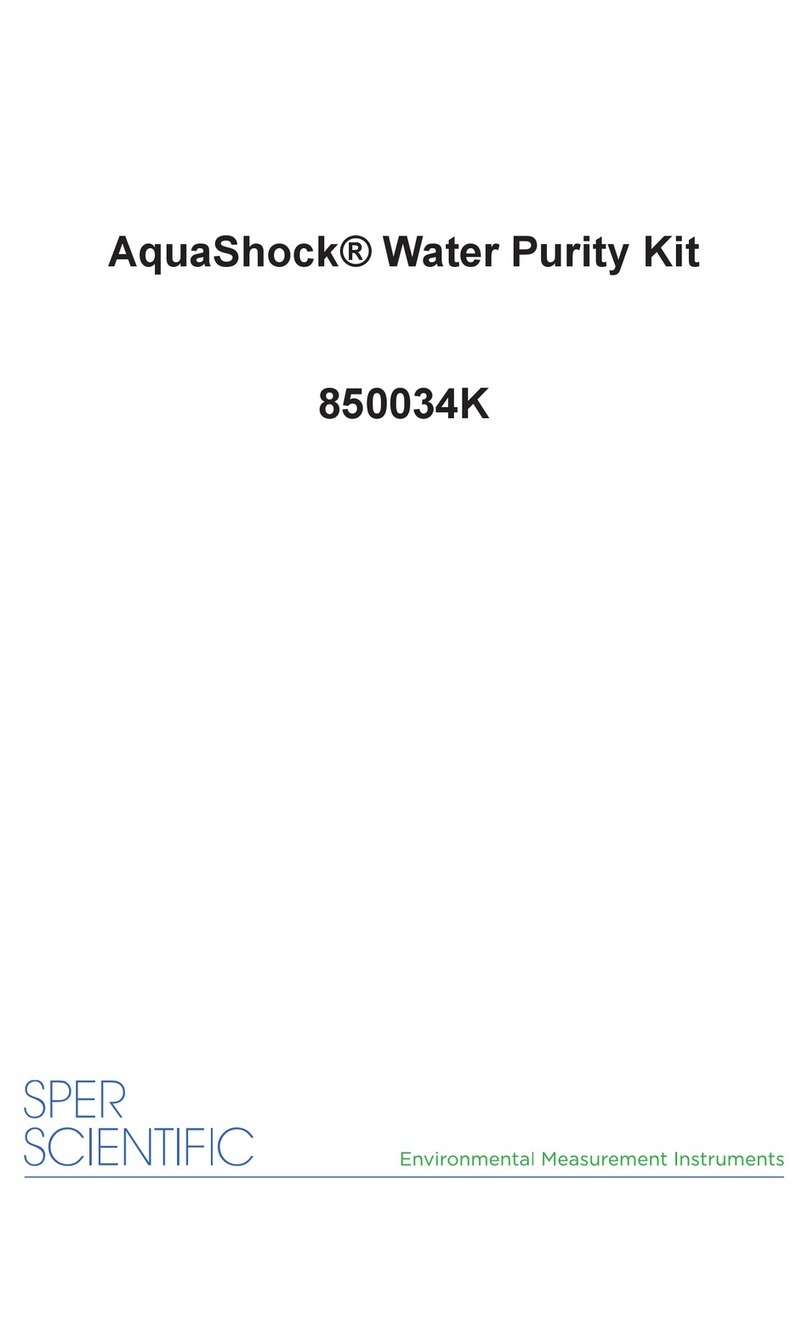
Sper scientific
Sper scientific AquaShock 850034K instruction manual

GE
GE DigitalFlow DF868 Programming manual
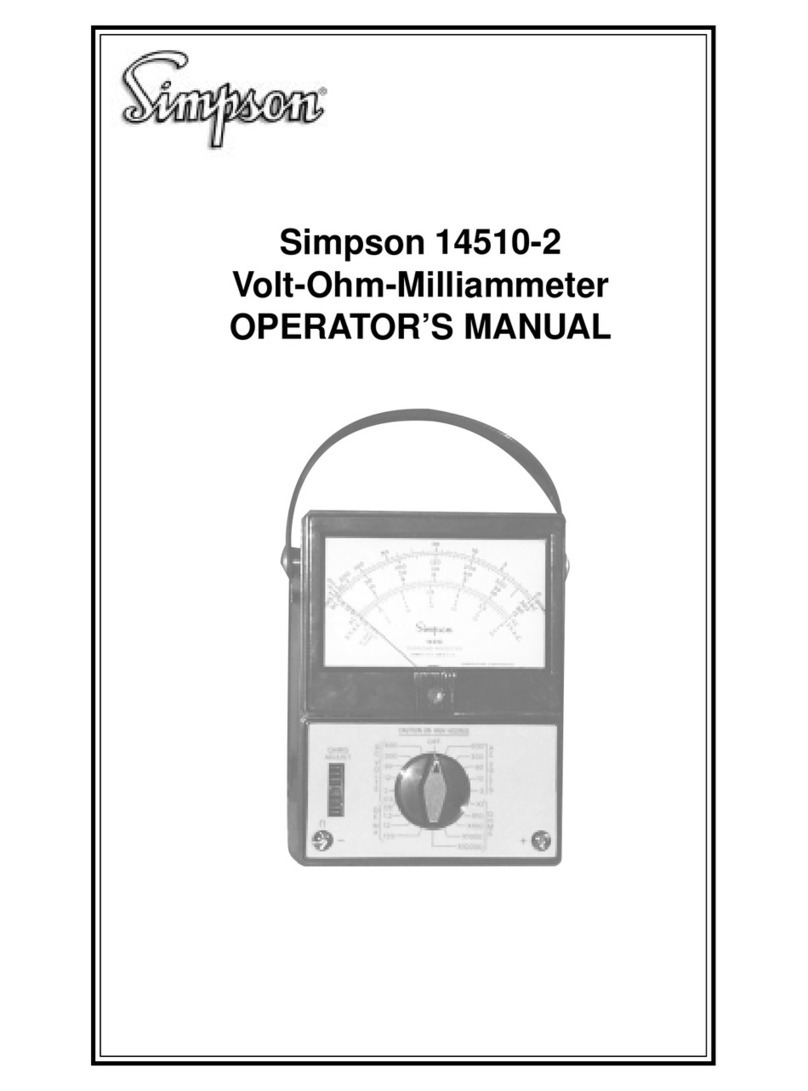
Simpson Electric
Simpson Electric 14510-2 Operator's manual
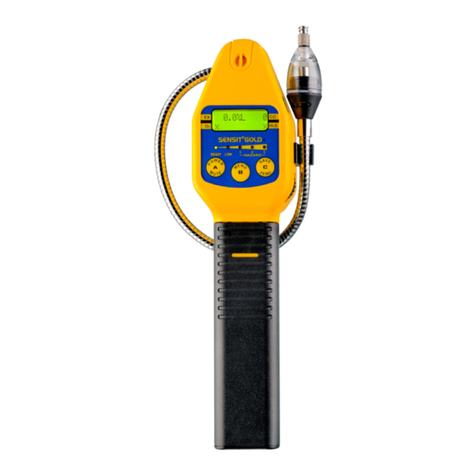
SENSIT Technologies
SENSIT Technologies GOLD CGI instruction manual
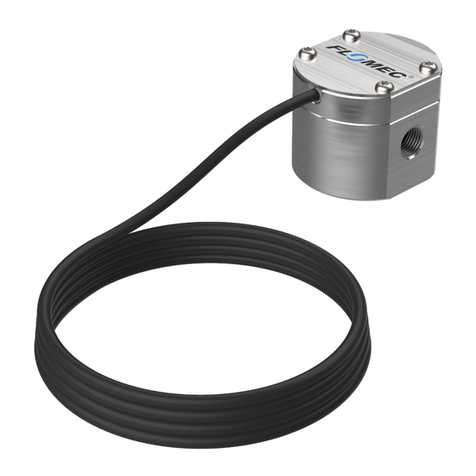
Flomec
Flomec EGM Series Operation manual
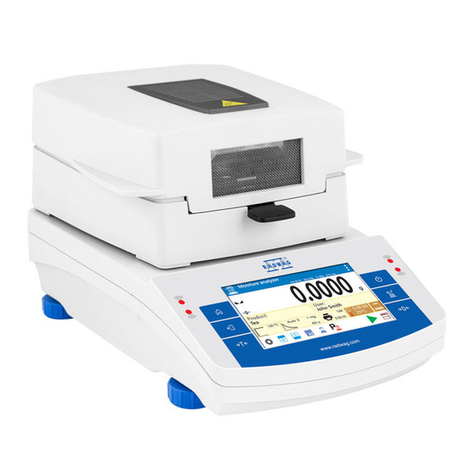
RADWAG
RADWAG MA X2.IC.A Series user manual

Measumax
Measumax MX 31-180 instruction manual
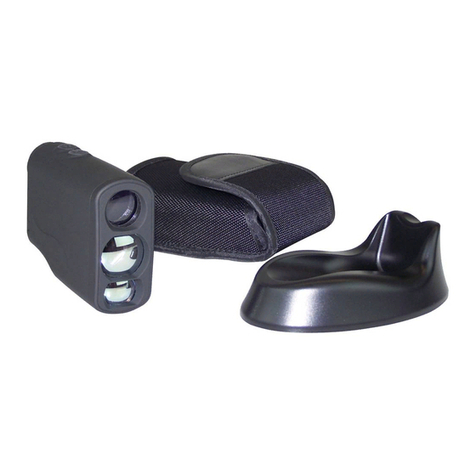
Berger & Schroter
Berger & Schroter PRO X7 operating instructions
